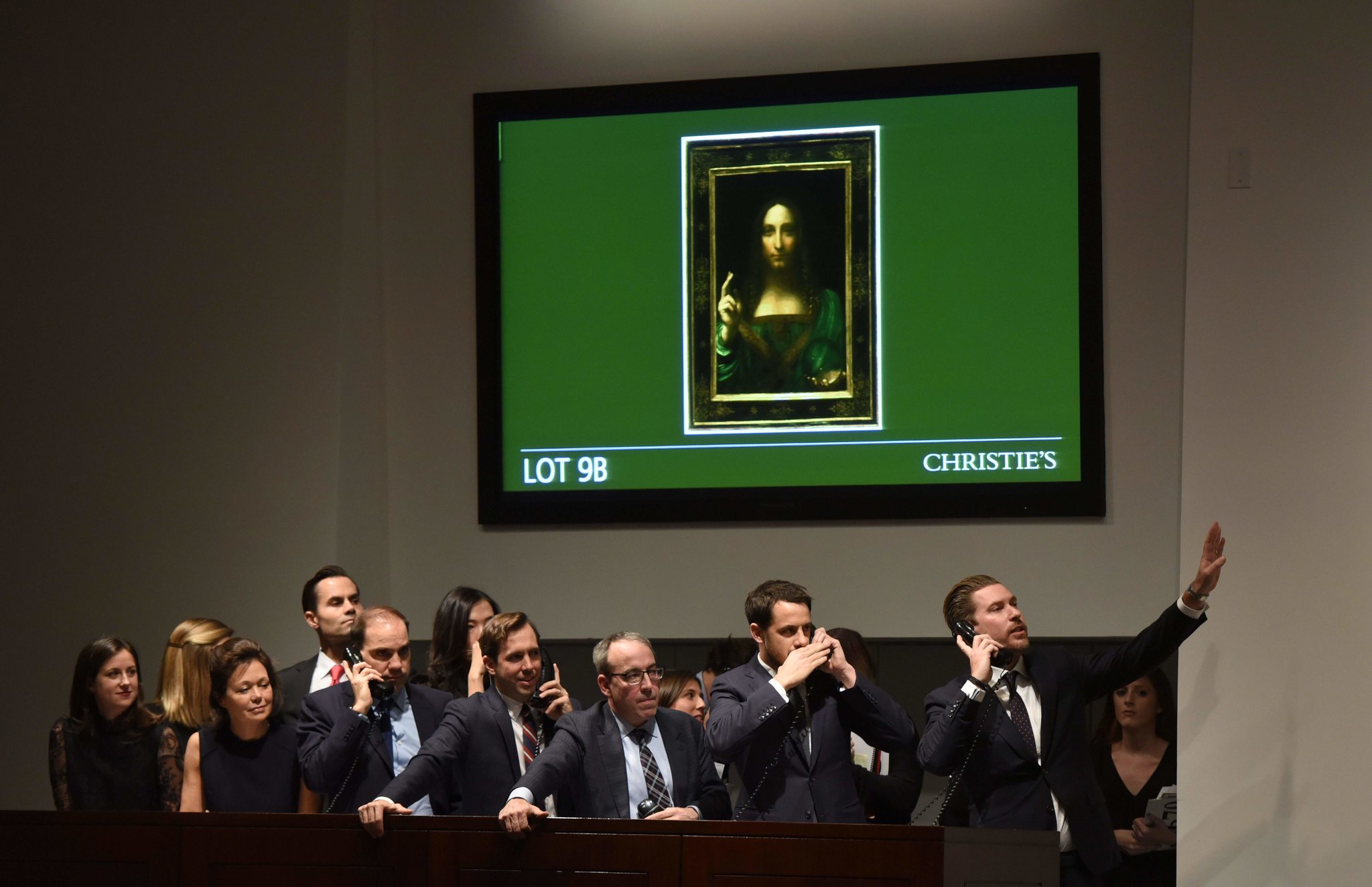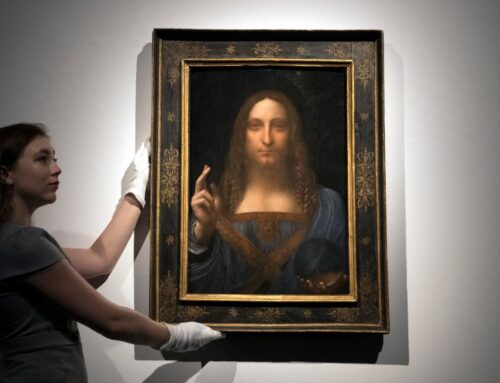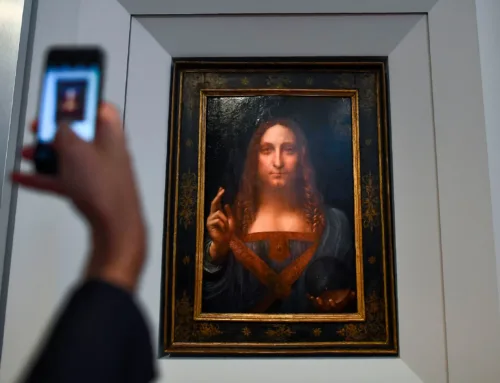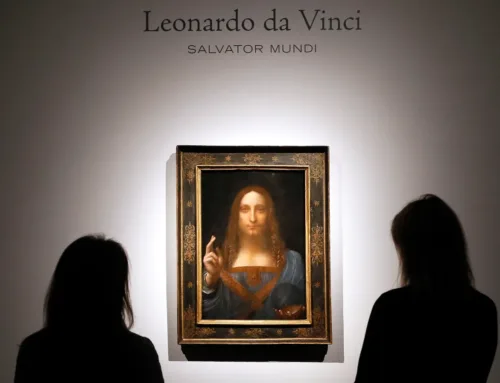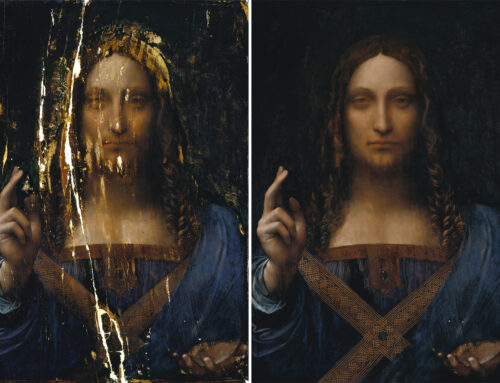Exhibition History
Following its extensive restoration and authentication, “Salvator Mundi” was unveiled to the public at the National Gallery in London in 2011. This exhibition, titled “Leonardo da Vinci: Painter at the Court of Milan,” was a landmark event that brought together numerous works attributed to Leonardo. The inclusion of “Salvator Mundi” in this prestigious exhibition was a significant moment, affirming its attribution to Leonardo and presenting it alongside other masterpieces like the “Mona Lisa” and “The Last Supper.” The exhibition drew considerable attention from art historians, critics, and the general public, further solidifying the painting’s status as a genuine Leonardo work and reigniting interest in its historical and artistic significance.
Auction and Record Sale
The journey of “Salvator Mundi” took a dramatic turn in November 2017 when it was put up for auction at Christie’s in New York. The painting was the star of the auction, generating immense anticipation and media coverage. The bidding started at $100 million and quickly escalated, capturing the attention of the global art market. After a heated bidding war that lasted for nearly 20 minutes, the painting was sold for an astonishing $450.3 million, setting a new world record for the highest price ever paid for a work of art at auction. The buyer was later revealed to be the Saudi Arabian Crown Prince Mohammed bin Salman, acting through a proxy.
Significance of the Sale
The record-breaking sale of “Salvator Mundi” had a profound impact on the art world, highlighting the extraordinary value placed on works attributed to Leonardo da Vinci. This sale underscored the painting’s significance not only as an artistic masterpiece but also as a cultural and historical artifact. The astronomical price paid for the painting reflects the deep appreciation and reverence for Leonardo’s work, as well as the intense competition among collectors and institutions to possess a piece of art history. The sale also sparked discussions about the commercialization of art and the implications of such high valuations for the art market.
Public and Scholarly Reactions
The public and scholarly reactions to the auction and sale of “Salvator Mundi” were mixed. While many celebrated the recognition and financial valuation of the painting, others expressed concerns about the commodification of cultural heritage. Some critics questioned whether any artwork, regardless of its significance, should command such a high price. Additionally, the sale reignited debates about the painting’s attribution, with some scholars continuing to question its authenticity despite the substantial evidence supporting its creation by Leonardo.
Current Status
Since its record-breaking sale, “Salvator Mundi” has remained largely out of public view, with its exact whereabouts often speculated upon. There have been reports suggesting it might be displayed at various cultural institutions, including the Louvre Abu Dhabi, but these plans have not been confirmed. The painting’s journey from obscurity to a $450 million masterpiece reflects the enduring intrigue and fascination surrounding Leonardo da Vinci’s work, as well as the complex dynamics of the global art market.

